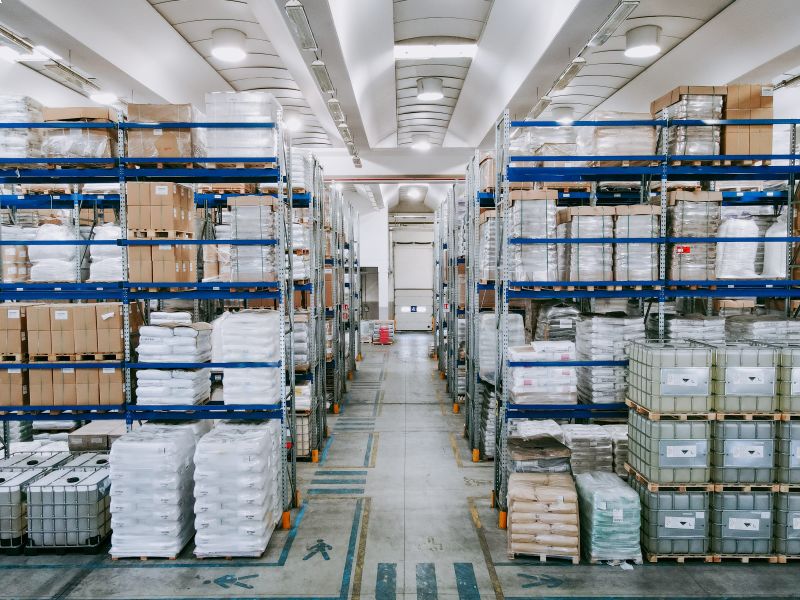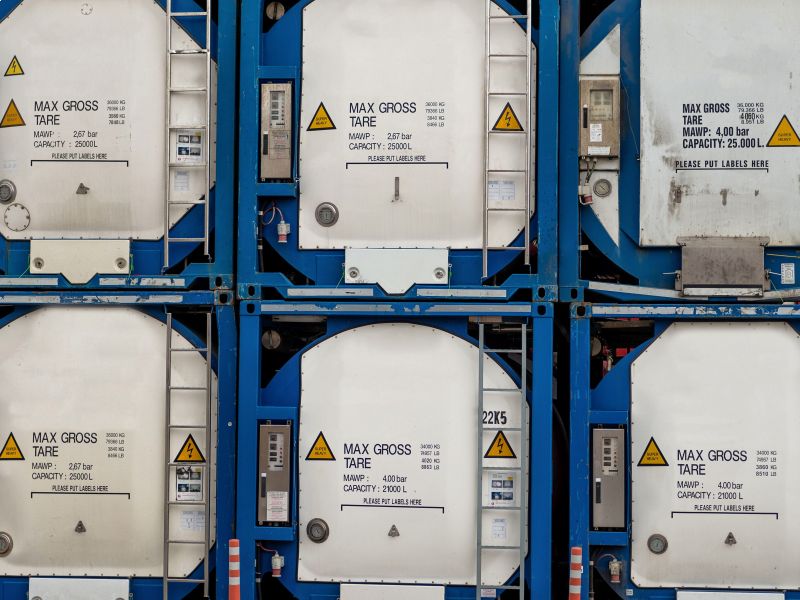Storage of Hazardous Chemicals: Storage Classes and Packaging Requirements .
The storage of hazardous goods requires proper planning, which includes defining the hazardousness of the substance in question, choosing suitable labels, assessing possible chemical incompatibility between substances and selecting suitable containers and facilities.
Proper storage of hazardous goods makes it possible to:
- minimise the possibility of harmful accidents, such as fires and explosions;
- limit as far as possible the exposure of persons handling such substances and the environment to them;
- prevent chemical substances that are incompatible with each other from coming into contact with each other and generating negative consequences;
- comply with the obligations imposed by the regulations in force.
The storage of hazardous goods means the storage of goods in packaging and containers for the purpose of using them within the company, transporting them or delivering them to third parties. Storage must take place in a room that is suitable and compliant with current regulations, in order to guarantee the safety of all storage operations.
Definition of hazardous goods for the Storage Class
The classification of hazardous goods is used to define their dangerousness and, consequently, the right way to store them.
Defining the types of substances and the type of packaging is also important to determine the compatibility of goods within the warehouse and, based on this, to organise storage. It is advisable to avoid keeping dangerous products in close proximity that could generate risky reactions on contact.
The classification of substances divides the goods into their respective Storage Classes: a Class includes substances with hazard characteristics that are considered similar and therefore require comparable safety systems. If a substance has more than one hazardous characteristic, all of them must be taken into account when organising storage and selecting containers.
Storage and packaging options for hazardous goods
The storage of hazardous goods can take place in different ways and the type of storage depends on the safety measures required to prevent and, in the event of an accident, respond to emergencies. Storage can take place in racks, in blocks, in gas and aerosol cans or at low temperatures.
Containers and packaging for the storage of hazardous goods must
- have sufficient mechanical, thermal and chemical resistance to withstand the stresses to which they are subjected;
- be appropriate for the type of substance they contain.
In addition, hazardous goods must only be stored in closed packages and containers with the name of the substance and labelling of the respective danger symbol, together with cautionary phrases to provide warnings of danger. The label on hazardous goods containers serves as the first source of information on the contents and potential dangers.
Packaging for the storage of hazardous goods must be designed and manufactured to prevent the contents from escaping. The materials chosen must not be subject to deterioration caused by the substance they contain, and all parts of the packaging must be resistant during the phases in which the hazardous goods are handled.
It is also very important to know how to handle empty containers that have already been used and have some substance residue: these containers must also be stored correctly to avoid possible dangers of flammable vapour mixtures in contact with air.
Rely on experts
The warehouses for storing hazardous goods at Corsini are subject to the regulations of the Seveso Directive, applied to establishments inside which hazardous materials and mixtures are stored.
We offer storage for: inert products, flammable products, products dangerous to health and the environment, and corrosive and irritating products.
Would you like more information about our logistic service for hazardous goods storage in Lodi and the surrounding area? Contact us.
News.
STAY UP TO DATE ON HAZARDOUS GOODS AND THE CHEMICAL SECTOR
The world of hazardous goods transportation is constantly evolving, as are the regulations affecting the shipment and logistics of hazardous substances and chemicals. Stay up-to-date with our industry articles.

 Registered office: Viale Etiopia, 5 - 20146 Milano (MI)
Registered office: Viale Etiopia, 5 - 20146 Milano (MI)












